QuestionQUESTION: my 6 month old miniature schnauzer barks at everyone whilst we are out walking he goes into a frenzy and its impossible to control him. He pulls on the lead I have tried a halti collar but he refuses to walk and just sits there and barks. plus he sits at the gate and barks in the garden if anyone approaches him he runs away please help I now dread walks . He is due to be neutered soon do you think this may help. thanks for any advice
ANSWER: Hi Anne,
barking at everyone on walks, going into a frenzy and being impossible to be controlled is an issue you are sharing with many of my clients and their dogs.
The way we completely get rid of this is by obedience training. I usually work the dogs outside, right in the drive way. That way they need to ignore what's going on around them, have to focus on me or the owner(s). A simple, very structural sit command can do the trick.
"Focus" is what my clients say, they touch their cheek with a finger and smile, smile, smile, saying "Good boy".
The other corrective command is "Leave it". As more commands the dog "Got down", as easier he's to be manipulated, will focus on you as he has to perform his commands.
The commands "Heel" and "Stay" and "Wait" are very important for a dog with behavioral issues like your Schnauzer has. Heel establishes leadership. I absolutely refuse using "Gentle Leaders".
There's nothing gentle about them, they are what's called an avoidance tool - it's ill fitted, nearly slips into the eyes of a dog and worst: The person who invented this money making promise wasn't thinking about a gentle method. The device is in the face, sits on "Intimidation pressure points", meaning the Gentle Leader is a threat to a dog. Sure, many will tell you the dog loves it and goes crazy when they see it.. I know someone who's dog was so happy to see a shock collar.. or was he? No, the dog was excited to go on a walk with the owner, to spent quality time together. They will endure anything for us, just as long they got our companionship.
And lets face it, I haven't seen one dog actually heeling with a gentle leader/haltie on their face. They still lead, they are still walking ahead, the leash's still in tension.
Anyway, you must teach him a proper heel (Possible with help of a very experienced, non-violent trainer. No, food/clicker method won't do the trick either. Your dog will get tired of treats soon and you'll end up at square one, plus by baiting a dog there's no way you gain leadership status, something he very much needs to relax, focus and trust.
You must exercise leaving the house correctly. The stay command does that (Owner moves away from dog, returns to dog) BUT when you exercise it as a discipline idea, you need to use the wait command. The wait's exactly the same as the stay, only the owner leaves and then calls the dog with a come to join the owner (Teaching automatic sit is advised so the dog won't jump on you - which is taught with the heel command).
My clients have strict, straight instructions and they are always happy to report it really works, the dogs grasp quickly and perform well, fast:
Do NOT go on walks!!!!! Why put yourself thru this? Why reward his actions? Why let it become a habit because you letting it happening on a daily basis is a learning experience for him.
Instead the walk exercise obedience commands for 20 minutes outside your home. It's exercise for the body, mind and spirit, it will wear him out more than a 3 mile run.
My clients have set "Landmarks", for example: From your drive way to the next one to your left. If the dog does perform heel well, add the drive way to your right. IF he messes up, outside session is over and you go inside where you won't give him any extra attention!! Oh yes, they know exactly why the fun stopped. Since they are eager to leave the house, to go for walks they will try their hardest to stay focused, too not upset you.
Neutering helps in many ways to prevent bad situations from getting worse. However, the solution IS training!! Please, find a behavioral trainer, someone who has experience with such dogs.
The trainer must also teach you on how to behave when you run into trouble during your walks.
Fence issue: There is such thing as fence aggressions. Often bored dogs think it's a fun game to bark at those who are passing by.. and then to run off when someone pays attention to them.
He seems to lack of proper social interaction and I suspect some of his behavior is fearful. He doesn't know how to behave and he shows it by telling everyone to "Buzz off".
He's so young, he's going to change fast!! But again, do NOT take him for walks, there are other activities, especially dog training, which will exercise him.
I am not advising group class right now because if he's that out of control it will feed his fears/aggressions and most likely disturb the class.
He should receive private lessons which you must exercise what you learned strongly and THEN he should come to a class, especially since you now know how to stop unwanted behavior. By then he should have learned to focus on you and you only.
My questions for you:
How old was he when you got him?
Where did you buy him (Breeder, pet store, Backyard breeder, private hobby breeder.)
Did you get to see his parents?
PS: Schnauzers are ferocious dogs. This breed is very common in my country, Germany, and comes in three sizes. The Giant Schnauzer is even used to perform Police and Military work. The not so common in the USA Standard Schnauzer is usually the most calmest of the bunch. All the ones I've had the pleasure to work with simply had owners who wanted to learn how to teach commands the right way.
The Mini shows a natural amount of aggressions as they are also rodent hunters, but make too great watch dogs. They might be small but they're usually real little spit fires. It is wise to socialize strongly at very young age, to bring the pup around other people, kids, other dogs, cats, etc.
Sincerely,
DogNanny 911
---------- FOLLOW-UP ----------
QUESTION: Thanks for your reply, in answer to your questions he was 8 weks old when we brought him home. The breeders where a family who owned a dog and a bitch. This was their second litter. We met the mum who was a very friendly dog the dad was there but was kept way from visitors as he was more of a guard dog.
It was interesting that you said dont take him for walks yet know this may sound silly but I thought that keep taking him out would help him get used to people. I have to say though I was glad to hear it I dread the walks. When training him outside should I try walking him up and down the drive with lead on? should I keep him on a short lead close to me. I did use an extender lead when on walks maybe this has hindered because when he had to have it pulled in towards me he pulled more. I hve tried to find a good trainer but they are all so expensive. Thanks for your help
ANSWER: Yes, taking him out does get a pup used to people.. but not every pup/dog is comfortable with this. Usually I advise to not go near a dog park or a "Puppy play group" since parvo and distemper are the most common puppy killers. That doesn't mean you have to wait until the pup's fully vaccinated (Around 4 - 5 month old + one month is my rule). There are so many ways socializing a young puppy: Invite guests, have them bring kinds or if they have well behaved dogs (Healthy, fully vaccinated), let them come over, too. Short walks to the mail box, greeting a neighbor, the mail man. Going for a car ride, going to the vet. Now the puppy is used to strangers getting close and when on walks, he's happy to see other people.
Here's my thought: Puppies absorb at early age what's going on in their environment. If the dad was the "Guard dog" which pretty much means he's aggressive, your puppy might learned by watching his dad, imprinted and copied the behavior. Genetics are also part of this, as dogs with bad temperament shouldn't be bred in the first place.
A guard dog, a protective dog does what he's supposed to do when the owner's commands it and will stop as soon as the owner says so. Aggressive dogs act on their own behalf, they aren't protective or guarding the family, they exercise territorial aggressions.
About your walks: Forget the dog's pulling!! Forget those tools, those "Special leashes", those non-pull harness, the haltie/gentle leader. They are NOT the solution!!
A dog pulls for many reasons. It may be out of excitement, because of aggressions, because he doesn't know any better or.. because the owner won't let him/her breath/won't take the pressure off the face.
The instincts of a dog are to PULL away from danger. That means if he pulls forward and you keep pulling back, continuing tension on the leash, you are triggering this instinct as he never once gets a chance of a loose leash. The technique is so easy, so simple that I can't for the life of me understand why those money making tools which are sold to frustrated owners aren't banned yet (Most of them cause also health risks).
Forget the word heel for a moment. In order to walk well you must be relaxed yourself. You and your dog go on a walk and you already know it's going to be a failure -- and you're acting accordingly: Tense, scared, insecure, frustrated, helpless and even angry. THOSE aren't trades of an alpha, of a leader. In order for your dog to find his confidence you must assure him that he's safe from the world and such the strong, benevolent leader stands for.
THAT is why the heel is what I call the "Leadership command". However, as I already said, forget the word heel. Let's focus on you first and call it Loose Leash Walk.
Who cares if your dog runs ahead to the end of the leash? Where's he going to go? 6 feet, which means he can't go any further than a leash is long (Btw, do not use any short leashes, 6 feet is perfect). So, gain that confidence that he isn't going anywhere.
He runs ahead, clearly taking leadership -- and you just simple turn on the spot, change directions, say loud and clear HEEL, use your left hand to tap your left leg (Dogs always trained to your left), clearly indicating where you want him to go, next to your leg.
He's behind you now, meaning he's got to catch up. He hears the tapping of your hand and is automatically curious, comes up at much slower pace - and right then, when he's aligned with you, you say, loud and clear:"Good boy, good HEEEEEEL". So what if he over-shoots you again?
You turn again!! Now, do NOT pull him into the turn on the tension leash -- this is incredible important to know. Instead use the momentum he created and give the leash a tuck toward you, out of your wrist as there's no need to scare him, intimidate him or knock him off balance. It has to be done playful, happy, exciting. Just a firm tug to say:"This way, you missed the turn".
Always say "HEEL" loud and clear and right before you turn.
You will see, within less than 5 minutes (My all-time record is 5 seconds with a Malamute) he'll understand your concept, accepts your leadership and.. will be so happy that there was finally some real communication going on.
To increase the attention span and the focus my clients start with their left foot, before they come to a stop they take the leash into their left hand, step out with their left foot, bring right foot up and bring leash into a vertical pull (NOT a choke! Straight leash up means to sit). Say nothing, automatic sits are silent. If he doesn't focus he will miss your signals.. and next time he'll do it just fine.
One more thing: Remember that you are triggering the instinctive behavior to pull even harder - away from danger which is in a pulling dog getting strangled because owners will pull the dogs back, then keep them with all their might to their left, never giving the leash/dog/collar relief.
#1 rule for my clients is: DO NOT TOUCH THE LEASH WITH YOUR LEFT HAND!!! The leash is held with the right hand and is at slack, dangling just below the knee caps. That way nobody is tempted to hold on to the leash, creating tension.
BUT: If you come to a stop/automatic sit, you do use your left hand. If you run into issues with him you do, of course, use your left hand to control him. If he acts out try to make him re-focus on the heel command.
Now you know why all you need to do is exercise him from one neighbors' yard to another - you both will be worn out after the first 20 minute heel session, I guarantee it.
One more thing: Make sure your right arm doesn't come up and lays across your chest, or to stretch it to the right/up, which creates tension, doesn't look confident and the dog will not heel right.. because he knows when his leader isn't in charge.
About trainers: See if you find someone who offers what I do. I don't charge session by session, especially not because some dogs with severe issues are calculated to take more time to become a social part of society. It can take month to assure the dog's reliable, etc.
I offer a package, a fixed price which includes a lifetime guarantee - meaning no matter how long the training is, there's no extra fee. If the client needs help they can always email, text or call me for help/advise. IF I believe I need to travel back to the clients house, and if it's 8 years down the road, it's free. I offer payment plans, even consider other payment arrangements.
I'm sure there's a trainer somewhere close by you who's willing to work your dog and accept a payment plan.
---------- FOLLOW-UP ----------
QUESTION: I cant thank you enough finally someone who is taking me step by step. can I just ask a couple more things I work monday to friday and my puppy stays in his crate which he is quite happy in. I have a dog walker who comes and takes him out with a couple of other dogs they are exercised off the leash which he loves do you think this is ok? also what do you suggest regards the barking on walks. sorry to take up so much of your time.
AnswerYou are very welcome. I became a dog trainer out of passion. Once I moved to the USA I realized that good dogs ended up in shelters and often found their end there simply because of behavioral issues, most of them easily correctable. My job's my passion, and to know that my work often impacted entire families, dogs and humans alike, it's the best pay-out someone can hope for.
Crate: most dogs are very happy in their crate as they are denning creatures by nature - and I believe in giving a dog it's crate, no matter what age they are. It's their own "Room", their sanctuary. My dogs are all adults and they'd be pretty upset if I'd remove their crates.
Since this is the dog walker and he does need to get out, it should be alright. If your dog walker has difficulties with his aggressions she/he may want to take him out back and play ball/fetch with him instead walking him.
The barking/aggressions are one and the same issue. Proper obedience exercises, especially SIT and HEEL are the eliminating commands, meaning as more you exercise him in front of your home the better he will get.
Remember the neighbor to neighbor restriction? Well, once he heels well thru out this stretch you add distance! Your next goal could be the drive way of the second neighbor to your left, if he succeeds, add another landmark -- which can be a light pole, a fire hydrant, etc.
However, if he won't listen you MUST shorten the distance you walk him again. Another reason why you're exercising him in front of your home is, if he acts up right there -- you take him straight to the house and you will not give him any special attention all day long for the rest of the day. No treats, no belly rubbings, no throwing a toy. He will try to manipulate you but stay strong. THAT is the only way he'll make a connection between his outdoor behavior and the idea of the reward system: HE's got to behave to go on walks. HE's the one who will ultimately determine how far and for how long he's enjoying going somewhere with you.
Let me tell you something, it really, really works. When I realized that dogs can make a connection -- I was baffled. "Just a dog", forget that statement, lol.
Clear actions on your part, consistency, never slack, repeat, repeat, repeat.
Dogs do not possess natural logic. However, we can teach them!
One of my current clients owns two Pit Bulls. One's mixed with Bullmastiff and is large and powerful, the other one's a off-street-rescue. Both dogs have different type of aggression issues.
The owners used to take each dog on separate walks, often TWO collars (Including a prong) and two leashes attached on each dog. They never ever dreamed of walking both together - it was just to dangerous and the dogs' aggressive behavior was frightening to them as they couldn't control the "Beasts" once they got started.
Now both dogs work with me in the front yard, at the same time. One of them just doesn't like people. We worked so hard with him that the other day someone parked the car to visit a neighbor and the dog started to growl just a wee bit and the owner said: "Quiet!", the dog got silent, "Good boy". But he was focused on the neighbor so the owner said: " Leave it" and "Focus" but the dog wouldn't look at her -- so she, without giving him any warning, said: "Heel" and guess what? The dog right away went into performance mode, ignored the man who was messing around in his trunk, looking for something. The entire time my client kept saying to her dog that he's doing a great heel, good boy, good heel. The dog LQQKED into her face, smiling, tail wagging and ignored the man completely. Right after that two Teens walked by, the dog stayed silent (Was in a sit, owner was listening to me explaining something). We saw the Teens come up and the owner placed the dog into a sit -- which again, puts him into performance mode, and this is important: BEFORE he even started to growl or bark or show any type of aggressions she already took preventive steps by saying: "Good quiet, good leave it". Now you may think "Why did she praise him for something he didn't even start in the first place?".
Positive reinforcement comes in many forms. A pre-praise, a reminder in a positive way, encouragement or as I call it "Positive charging" goes a long way. She "Worked him thru it", clearly reminding him she's in charge but, as a typical Alpha would do it, stay calm, assertive and in control.
BTW, I won't allow any "Funky" collars, no prongs, no chokers of any kind. I do like Martingale collars as I believe whoever thought of them was a genius. They aid dogs which like to pull out of collars, but they also help owners to gain confidence because some parts of this type of collar does close up -- but never chokes the dog. It can't close up, it only makes it fit snug and secure. But usually, with non-aggressive dogs I have my clients use a regular leather or nylon collar, especially to avoid any choking or pain infliction.

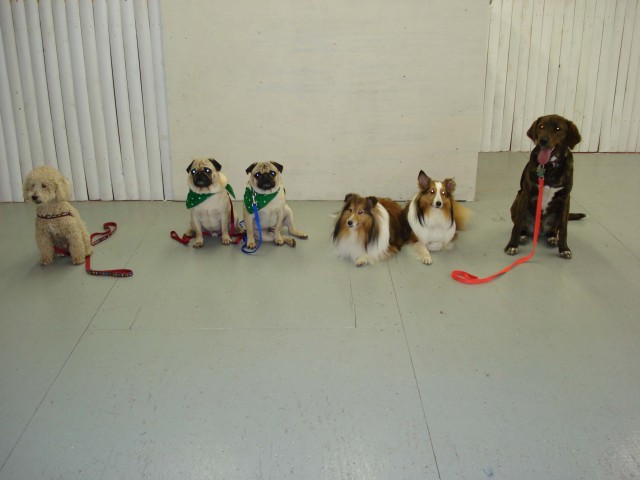 Male Chesador
QuestionWe have a 8 month old puppy that is more than s
Male Chesador
QuestionWe have a 8 month old puppy that is more than s
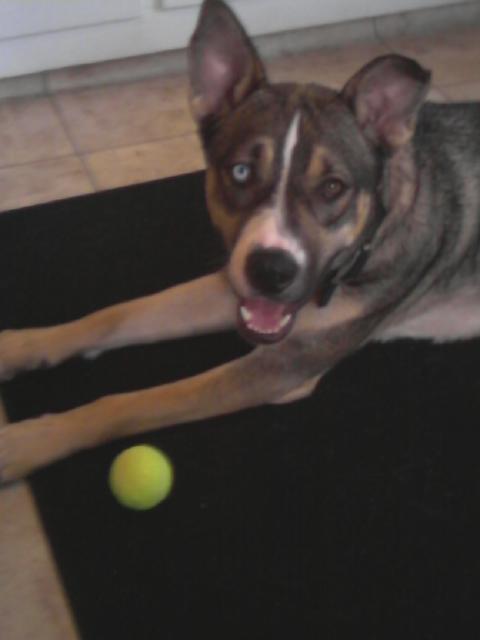 Dog tackling
Question
My dog
I would like to know a technique or a t
Dog tackling
Question
My dog
I would like to know a technique or a t
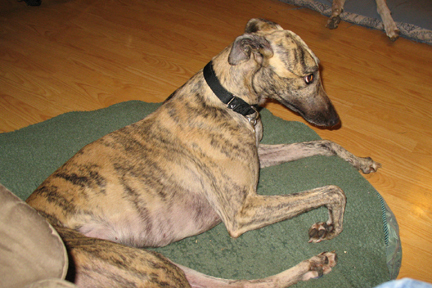 Adult Greyhound Howling
Question
Lisette
Hello Kathleen,
Thank you for taking
Adult Greyhound Howling
Question
Lisette
Hello Kathleen,
Thank you for taking
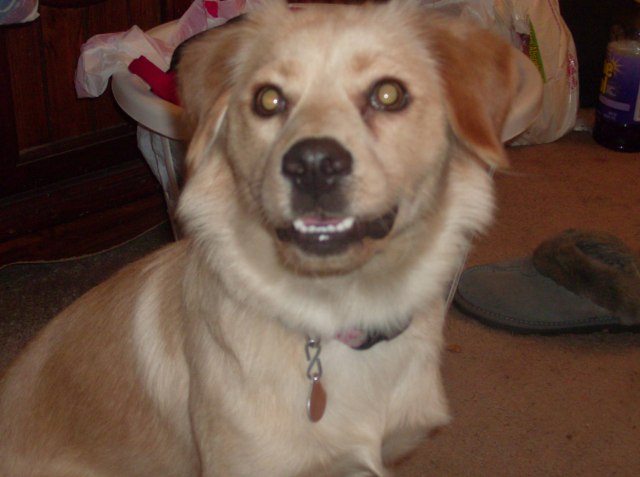 Running/Non-Obeying
Question
Star
I have a female Lab mix who has this obse
Running/Non-Obeying
Question
Star
I have a female Lab mix who has this obse
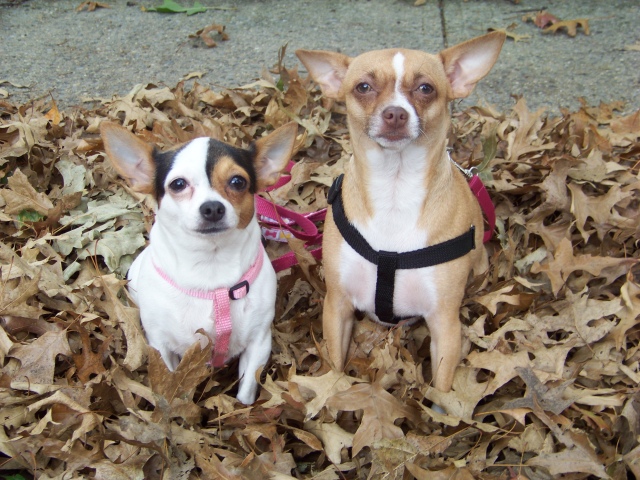 My dog eats poop
Question
thats luna to the righ
Hello, how are you? I h
My dog eats poop
Question
thats luna to the righ
Hello, how are you? I h